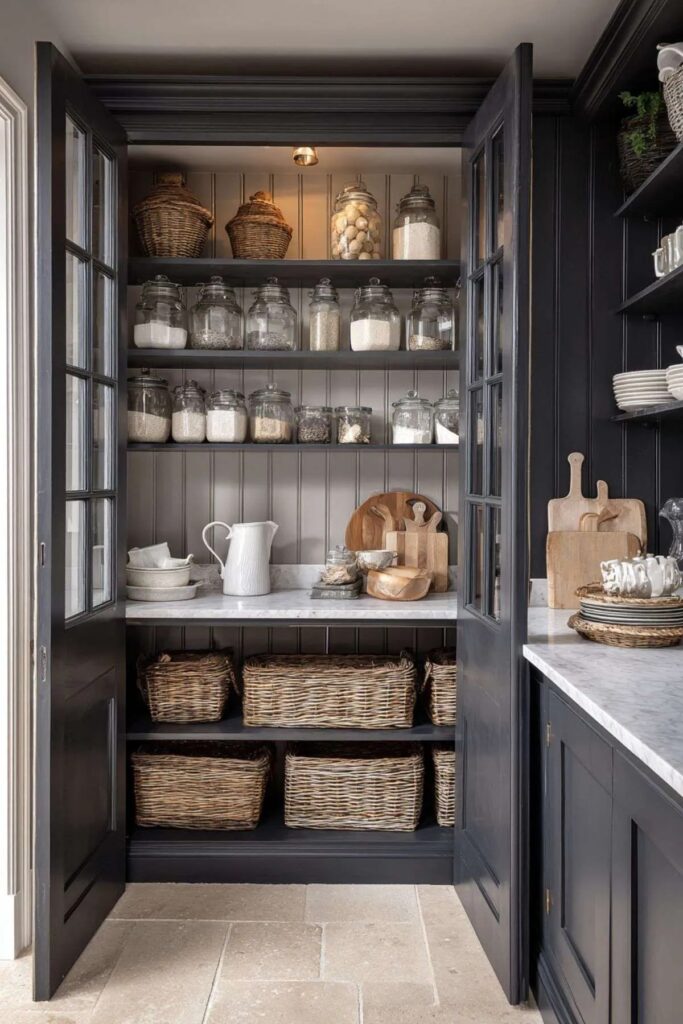Creating a home pantry is more than just a storage solution; it’s a game changer for your kitchen routine. Have you ever found yourself rummaging through cabinets, searching for that elusive can of beans or the last packet of pasta? Imagine a space where everything is easily visible and accessible, enhancing your cooking experience. This article will explore practical tips and strategies for establishing a well-organized pantry that not only simplifies meal prep but also minimizes food waste and saves you precious time.
So, how can you create the perfect pantry? From choosing the right containers to implementing efficient organization techniques, we’ll cover all the essential elements you need to know. Let’s dive into the world of pantry perfection and discover how you can transform your food storage into a model of efficiency.
Choosing the Right Space for Your Pantry
First off, consider where you want to create your pantry. Whether it’s a dedicated room, a closet, or a section of your kitchen, location matters. You’ll want a spot that’s easily accessible. Think about it: if you have to dig through clutter every time you cook, you’ll likely lose motivation.
If you’re short on space, don’t worry! You can utilize vertical space with shelves or even hanging organizers. Just remember to keep frequently used items at eye level.
Storage Solutions: Containers and Labels
Now that you’ve identified your pantry space, it’s time to think about storage solutions. Using clear containers can make a significant difference. Not only do they keep your food fresh, but they also allow you to see what you have at a glance.
Investing in quality labels is crucial for easy organization. Labeling helps everyone in your household know where things belong, and it can even make meal prep faster. Consider using a label maker or chalkboard labels for a stylish touch.
Organizing Your Pantry: Categories and Zones
Organizing your pantry into categories simplifies finding what you need. You might want to group items such as:
Establish zones within your pantry for each category. This not only keeps everything organized but also allows you to easily spot when you’re running low on something. Plus, it makes meal planning far less stressful!
Regular Maintenance: Keeping Your Pantry in Shape
After setting up your pantry, regular maintenance is key. Take a moment each month to check expiration dates and reorganize any items that have shifted. This routine will help you keep your pantry in top shape.
Don’t let clutter build up over time. Make it a habit to put things back where they belong after each use. It’s a small effort that pays off in the long run.
Utilizing Leftovers and Reducing Waste
Creating a well-organized pantry also helps in reducing food waste. Think about incorporating a section for leftovers or items nearing their expiration. You could use it as a reminder to use these ingredients in your next meal.
What if you could save money while being kinder to the planet? By keeping track of what you already have, you can plan your meals around those items, leading to less waste and more creativity in the kitchen.
Incorporating Seasonal Items
Don’t forget to adjust your pantry according to the seasons. During fall, for instance, you might want to stock up on canned pumpkin and spices for baking. In summer, you could focus on lighter snacks and fresh ingredients.
Seasonal organization keeps your pantry relevant and useful. Plus, it keeps your cooking aligned with what’s fresh and in season, making your meals tastier.
With these strategies, you’re well on your way to creating a functional and efficient pantry that will revolutionize your cooking experience. So, are you ready to take the plunge and transform your kitchen? Let’s get started!




